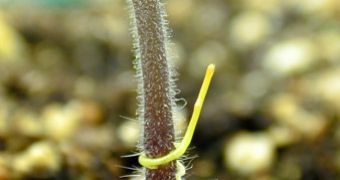A new study carried out at the University of California involving a parasitic plant known as the dodder vine, now shows that this plant is not only able to consume the water and the nutrients of the host, but it can also tap into the communication system of the latter and use it to gather information for its own purposes.
Plants communicate messages to different parts of their body with the help of RNA molecules. However, the new study shows that in the case of tomatoes with parasitic dodder vines, the RNA molecules can actually be passed into the parasitic plant, and travel up to 30 centimeters from the location where the dodder vine grafted onto the tomato.
"It might be important for the parasite to know when the host is flowering, so it can flower at the same time," said Neelima Sinha of the University of California, Davis, suggesting that the RNA molecules are used by the dodder vine as a means to synchronize its lifecycle to that of the host.
The results of the study could provide a future method to fight off the parasitic plants that attack crop plants. Similar studies investigating the communication capabilities of certain plants found nearly two years ago that before attacking, baby dodder parasites first probe the air for chemicals released by potential hosts.
Also, the western U.S. Shrub, or the sagebrush, was proven to communicate with other sagebrush trees when attacked by insects, so that if they are in turn attacked, the defense systems would be ready to fend off the aggressors.
Similar communication mechanisms can be found in mustard plants, which, when attacked by insects eating away their roots, release a chemical mixture through the leaves and into the air, indicating to other insects that the plant is taken, for example.

 14 DAY TRIAL //
14 DAY TRIAL //